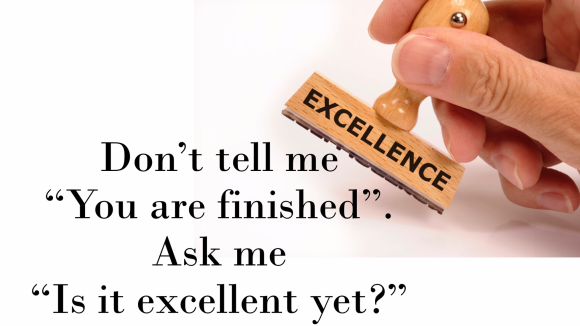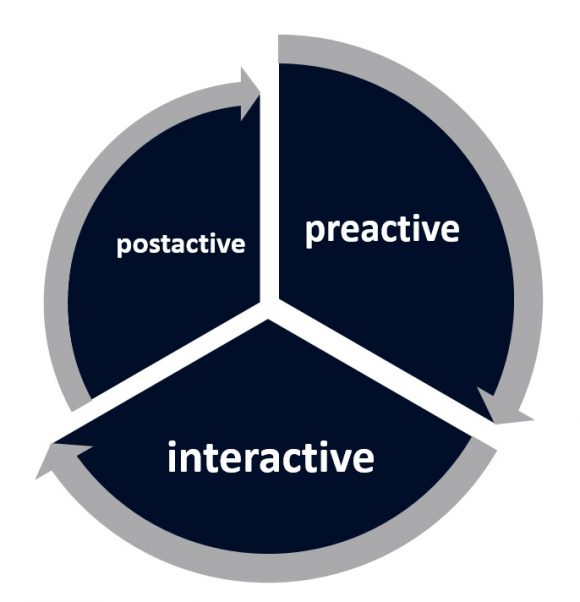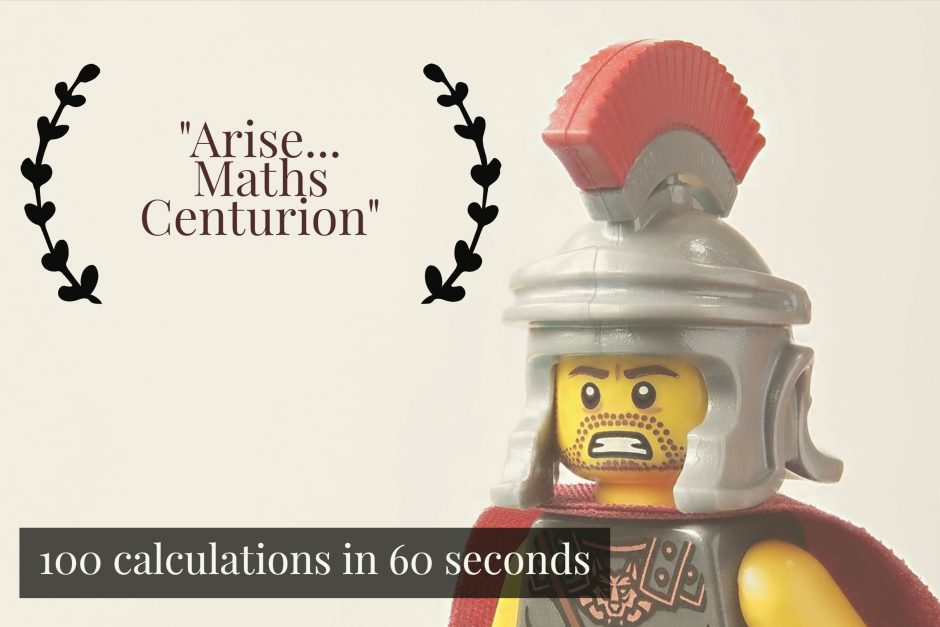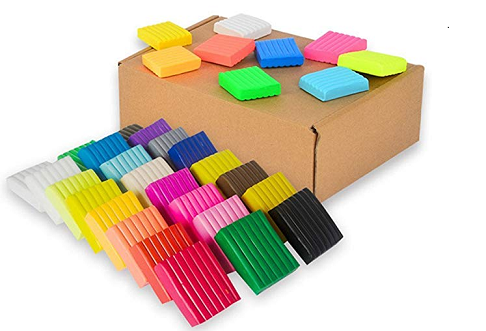Expertise and excellence are regular talking points in our office. What does it look like? How does it feel? How do we develop it? How do we encourage / insist upon it.
Last year we adopted this stance and, unashamedly stolen from Twitter, we posted Mark Enser’s poster in every classroom. It was an evolution of a conversation I had enjoyed with a Maths colleague and a PLC group.

It represented both a culture up-shift in staff and student expectations and transference of responsibility to the students. This modest move represents one of those “small-big” things that has refined my leadership and teaching philosophy. Of the importance of doing the small things in a big way (well worth the two minute diversion). It coupled with observations of an expert teacher, Mr Baddam, who would frequently remind students, “Now remember, only your best work,” which is now prominently displayed in school.
More recently, David Rogers sent me an article to read on the difference between novice and expert teachers and it got me musing, connecting the dots, building on my everyday big-picture of thinking of education and teaching.
Is my teaching excellent yet? Am I an expert? Even if, ironically, I know that I will never be finished. So full circle – What does expertise look like? How does it feel when you walk into a room with an expert teacher at work? Here is what I learnt and feel would be worthwhile sharing.
Characteristics of Expert and Novice Teachers
Understanding teachers’ knowledge and how it is developed as they live through their experiences is crucial to the understanding and refinement of expertise.
Most studies comparing expert and novice teachers focused on their cognitive processes in different phases of teaching, taking on board the distinction made by Jackson (1968) between ‘preactive’ (the period before teaching, when teachers are planning the lesson and evaluating and selecting teaching methods and materials) and ‘interactive’ phases of teaching (when teachers are interacting with students in the classroom). Jackson pointed out that there are qualitative differences in what teachers do in these two phases.
Clark and Peterson (1986) proposed a third phase, the “postactive” phase, when teachers reflect on their teaching after a lesson and make decisions about subsequent teaching. Note the distinction in teacher thinking between the preactive-postactive phases is not as marked as that between the preactive-interactive phases because of the cyclical nature of the teaching process. Reflections on teaching in the postactive phase often serves as input for planning in the preactive phases.
I summarise this description visually.

- Preactive – considered the most important thinking process in which teachers engage. A sequence of decisions: which specification, aims and objectives, content of the lesson, materials or activities.
- Interactive – organization of activities, presentation of materials,
- Postactive – evaluations made about the lesson, that serve as input for future lessons.
Next, in reading chapter, I clipped and attempted to categorise the observations, many of which are taken from referenced journal articles.
Preactive
Novice |
Expert teachers |
Planning |
|
| Much shorter lesson cycle planning | Unit planning, daily planning, weekly planning, term planning, and yearly planning. |
| Novices tend to be linear in their planning – often linked to the appraisal model from training. | More concern with the flow of the learning or “how” the class will work |
| Plan to the objectives more so than the students | Start planning with / where the students learnt the lesson previously |
Efficiency |
|
| Written planning, more detailed, purposeful and deliberate | Rich, mental planning; grocery list, thinking and reflecting on the fly |
| Stay close to the stated objectives in the prescribed curriculum guide | Demonstrate more autonomy in their planning |
| More investment required | Rarely had to design classroom activities from scratch |
| Know that it is almost impossible to determine in great detail how a lesson should proceed | |
| Fewer previous materials / resources to draw upon | Often plan by deciding whether amendments were needed |
Flexibility |
|
| “Routines” to expert teachers are “conscious decisions” to novice teachers | |
| Use regular checkpoints to evaluate student understanding or progress. | |
| Account for prior learning, academic performances, and abilities | |
| Often have difficulties anticipating problems during lessons and the difficulties that students may have with the curriculum | Expert teachers are able to anticipate possible situations in lessons and have contingency plans to deal with these situations |
| Reluctant to depart from their plans in response to student cues | Incorporate an element of flexibility in their plans |
| Often ignore context | Context aware |
| Review content with their students, for the student’s benefit | Seek to understand their students, to be better teachers |
Rich and integrated knowledge base |
|
| Thinking and decision making in the preactive phase are inextricably linked to those in the interactive phase. | |
| Decisions made in the preactive phase are subject to modification as teachers implement them in the classroom | |
Interactive Phase |
|
| Classrooms are multidimensional, in that many events occur over time. Events in a classroom occur simultaneously and unpredictably. | |
Novice |
Expert teachers |
Decoding a classroom |
|
| See the descriptive detail without assigning meaning | Able to decode the signals in a classroom and recognise patterns. They assign meaning to this information and are able to make evaluative judgements and adjustments |
| Take more into consideration, more items of information, on almost all aspects of their interactive decision-making | Simplify the complexity – assign relevance to the information |
| Are better able to differentiate the immediate and long-term significance of classroom events | |
| Recognise less critical incidents, resulting in a decision by the teacher to delay action or to take no action at all. | |
| Novice teachers did not differentiate the importance of the various pieces of information about a class | Apply student information to teaching |
| Novice teachers were found to attend more to student behavior | More concerned about instructional objectives, significantly more on content than on classroom processes |
Improvisational skills (see flexibility) |
|
| Have difficulties maintaining the direction of the lesson when responding to student questions, also with questions that were unplanned | Use student responses and questions as springboards for further discussion |
| An inability to modify plans – as the result of questions or valued responses from students | A balance between student-centeredness and content-centeredness |
| Access to on-the-spot examples to illustrate and clarification of concepts | |
| Established routines allows teachers to attend to non-routinised aspects of teaching | |
Problem representation and problem-solving |
|
| Analyze and interpret classroom events and problems in a principled way | |
| Lack justifications for the actions | Can justifications solutions and offer alternative practices |
| Sophisticated problem representations, leads to effective problem solving | |
Amy Tsui chapter didn’t cover postactive phase.
With this information, I hope to be able to coach new teachers through;
Preactive phase
- encouraging greater preactive thought and planning to be given to the flow of the learning or “how” the class will work – than focusing on only planning the content
- encouraging new teachers to move beyond lesson-by-lesson planning
- help new teachers connect reflections of teaching to inform planning
- signpost common curriculum misconceptions and flexible solutions during the preactive phase
- share with teachers that it is almost impossible to determine in great detail how a lesson should proceed
Interactive phase
- spending time with new teachers in lessons,or observing lessons, or encourage observing lessons with a purpose
- highlight and exemplifying experts routines
- help decode the signals in the classroom
Finally, to allay some of the concerns and worries that all new teachers experience, explaining that it takes practice and patience and sometimes dogged determination, develop and refine one’s classroom practice.
I thought that I would leave you with this thought for further discussion
Routines are realizations of teachers’ conceptions of how life in the classroom should be structured to facilitate student learning. They are by no means thoughtless. Discuss
Amy B M Tsui – PhD (Birmingham, UK); Hon Doc. of Ed, (Edinburgh, UK).
Professor Emerita.
Faculty of Education, HKU


